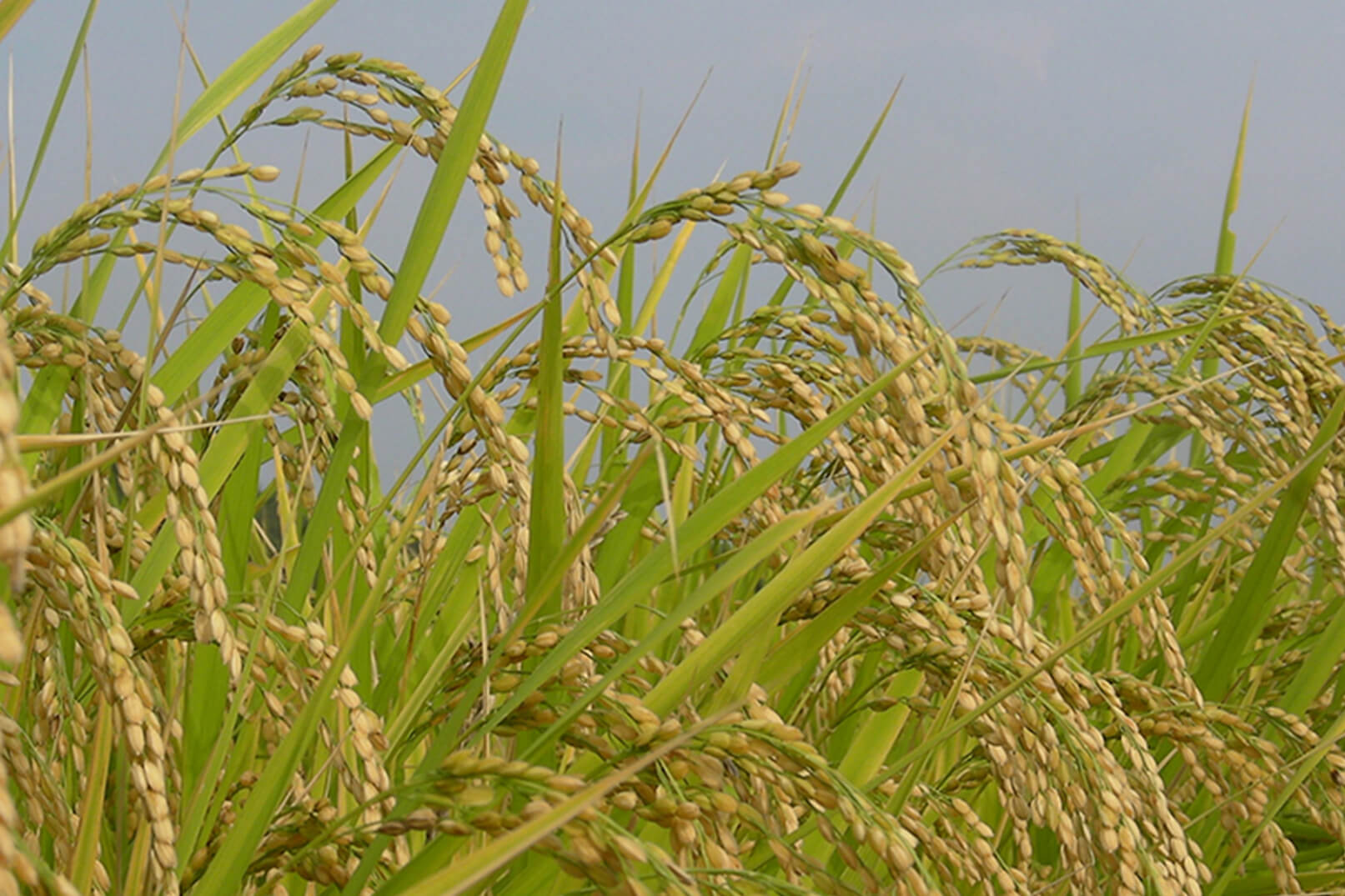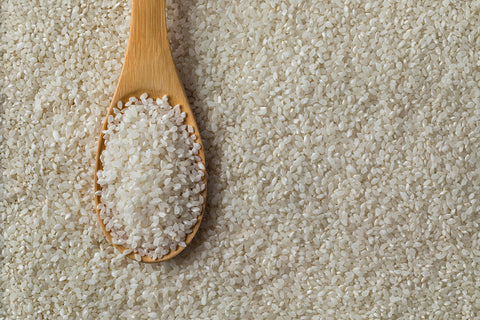
Kōji is an essential component in both Japanese cuisine and cooking across other parts of East Asia. It generally refers to rice that has been sprinkled with kōji mould, derived from the spores of the aspergillus oryzae fungus. This produces the kōji (or kōji rice, as it is sometimes known), which is a fundamental part of the fermentation and saccharification processes that are common to Japanese cooking. Kōji is used as the fermentation starter for a wide variety of Japanese food staples, including sake, miso, and soy sauce, among others.

History
The use of kōji as an ingredient in cooking is believed to have been originated in China. The first mention of using mould to ferment food can be found in a text dating from the Zhou dynasty in the fourth century BCE. This discovery led to the development of several fermented foodstuffs, including soy sauce and jiang (a Chinese ingredient, similar to miso) as well as popular fermented drinks, such as huangjiu and li, which are similar to (but predate) their Japanese equivalents of sake and amazake. While there is no definitive timeline for kōji being introduced to Japan, it was known to be in use at least as early as the sixth century, with the process likely brought over by Chinese sailors and traders.

Production
The aspergillus oryzae mould grows naturally all across Japan and is easily harvested. However, many modern producers cultivate their own mould to ensure consistency and quality across their products. The spores of this mould (kōji-kin) are sprinkled across steamed rice. This mixture is packed into wooden boxes and kept in a warm, humid environment, where they are able to germinate throughout the rice base, releasing digestive enzymes and breaking the rice down into constituent carbohydrates and proteins. This process can take anywhere up to 50 hours.
Cultivating kōji mould
While kōji-kin is taken from a specific species of fungus, there can be much variety depending on how they are cultivated. Kōji mould can be cultivated to enhance certain properties, such as the speed of mycelial growth, the strength of its digestive enzymes, and its colour and aroma. Many manufacturers of rice kōji and soy kōji use their own proprietary kōji moulds from which they harvest the kōji-kin spores.
Types of kōji mould
Quite aside from cultivating specific properties into their kōji-kin, there are several distinct varieties of mould from which to harvest the spores for germinating your rice kōji. Yellow kōji: this is commonly used in the production of sake and shōchū, and it delivers a rich, fruity, and refreshing taste. White kōji: this is easy to cultivate and its enzymes encourage rapid saccharisation, resulting in mild, sweet flavours. Black kōji: first cultivated in 1910, black kōji produces large quantities of citric acid. Not only does this prevent spoiling when used in a fermentation mash, it is better at extracting the taste and aroma from its base ingredients.

Uses of kōji
Kōji is used as a fermentation and saccharification starter for a wide range of Japanese foods. It is mixed with other ingredients, producing digestive enzymes that create umami flavours. These enzymes also break down the starch content of various grains, pulses, and vegetables, converting them to glucose and infusing the finished product with a natural sweetness. This produces the distinctive tastes associated with such products as soy sauce, miso, and amazake. Kōji is also used in alcoholic beverages and ingredients, such as mirin, shōchū, and sake. Here, the high levels of glucose are converted to alcohol, often by the addition of yeast. A mixture of water, salt, and rice kōji produces a simple marinade that can be used for meat and fish. Aside from the sweet/salty flavour, this marinade has an added benefit. The digestive enzymes released by the kōji actually tenderise the meat during marination.

Health Benefits of Kōji
Kōji offers several health benefits as part of one’s diet. Like many fermented foods, it has been demonstrated to improve the quality of intestinal flora, thanks to the quality probiotics found in the kōji starter, aspergillus oryzae. This contains glucosylceramide, which has improving effects on intestinal microbial flora, helping to aid a strong immune system. In addition, studies have shown that kōji can have a positive impact on efforts to reduce weight gain, fat accumulation, and high levels of blood sugar. Furthermore, its high vitamin content helps with recovery from fatigue, as well as the regeneration of hair, skin, and nail cells.
Nutritional content
Kōji contains several key vitamins needed for a healthy lifestyle. These include Vitamins B1, B2, and B6, as well as Vitamin H and pantothenic acid.

Kōji Mould or Kōji Rice?
While the word kōji can be used to refer to both the mould and the rice starter, in everyday culinary use, we are generally speaking about kōji rice. Kōji mould on its own is of little use. It is only when added to rice, or other grains and pulses, that it becomes key to Japanese cuisine. The mould is often called kōji-kin to differentiate it from rice kōji.
Soy Kōji
Soy kōji is prepared in a similar way to rice kōji, but using soybeans and wheat as the source of starch to create the fermentation starter. More information about the ratio between soybeans and wheat, and other grains that can be introduced to the process, visit our soy sauce page for a definitive listing of the different varieties.
Popular Products
These are just some of the rice kōji products and variations that prove particularly popular at SushiSushi. Click on a link to learn more, or visit our online store for more rice kōji products.
Tsurumiso Rice Kōji
This handy-sized packet of dried rice kōji is ready to use straight out of the bag. Infused with kōji mould, it is a store cupboard essential for anybody engaged in making Japanese dishes or even home-made sake.
Horaiya Rice Kōji
We also provide dried rice kōji from another of our valued suppliers, Horaiya. This high-quality rice kōji can also be used immediately, whether for the creation of miso or shio kōji, or the fermentation and brewing of beverages.
Marukome Shio Kōji
Shio kōji is natural seasoning made from rice kōji, salt, and water, and much used in Japanese cooking to add that authentic umami flavour to food. It works great as a marinade, tenderising the meat in the process.
Our Suppliers
Here at SushiSushi, we source our rice kōji from some of the most well-respected and established producers in Japan. These include:
Horaiya Honten
Horaiya Honten has been in business for more than a century, creating kōji products of exceptional quality and taste. They use traditional methods to produce amazake, miso, sagohachi pickling base, and more. Their dry rice koji is of the highest standard and one of our most popular items.

Tsurumiso
Tsurumiso have been trading for over 140 years, creating high-quality food products using traditional techniques. As the name suggests, they are famous for their miso but, as part of that ingredient’s production process, they also create rice kōji of the same high standard.Visit Website










